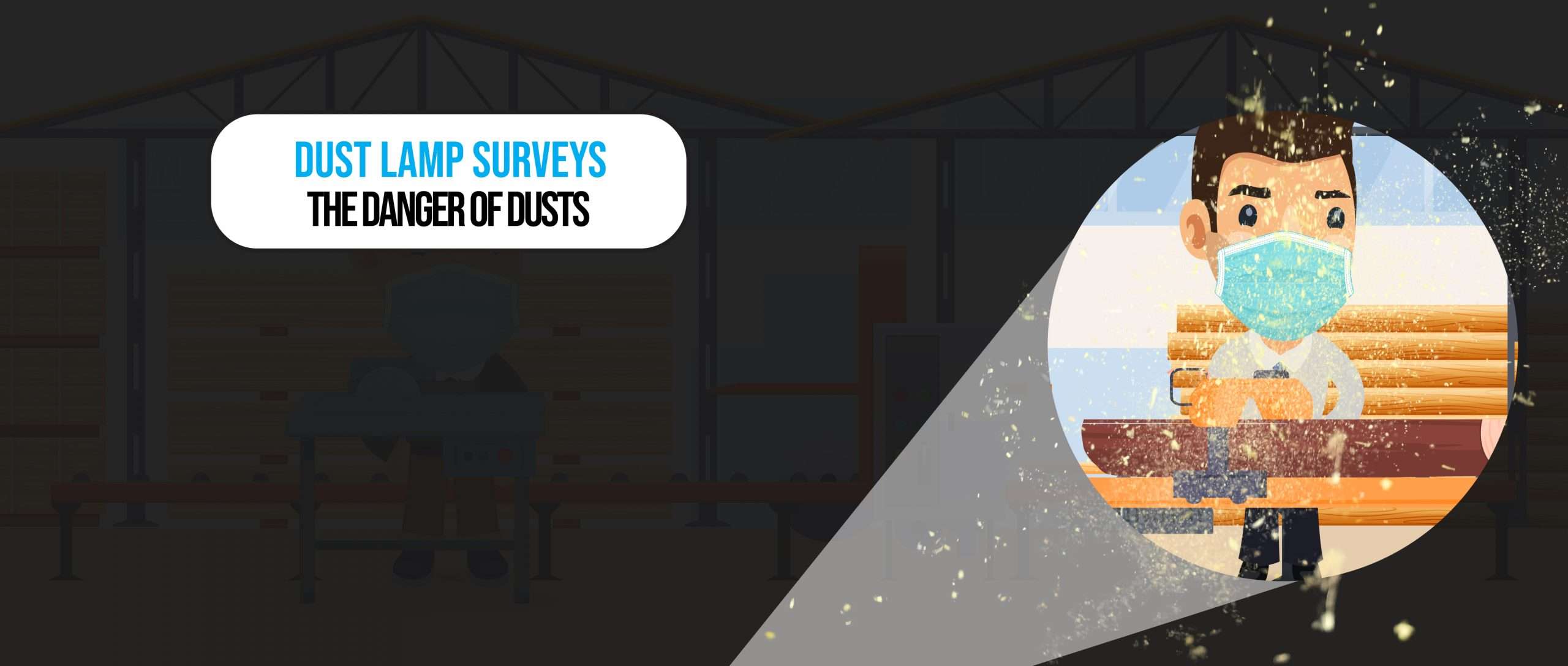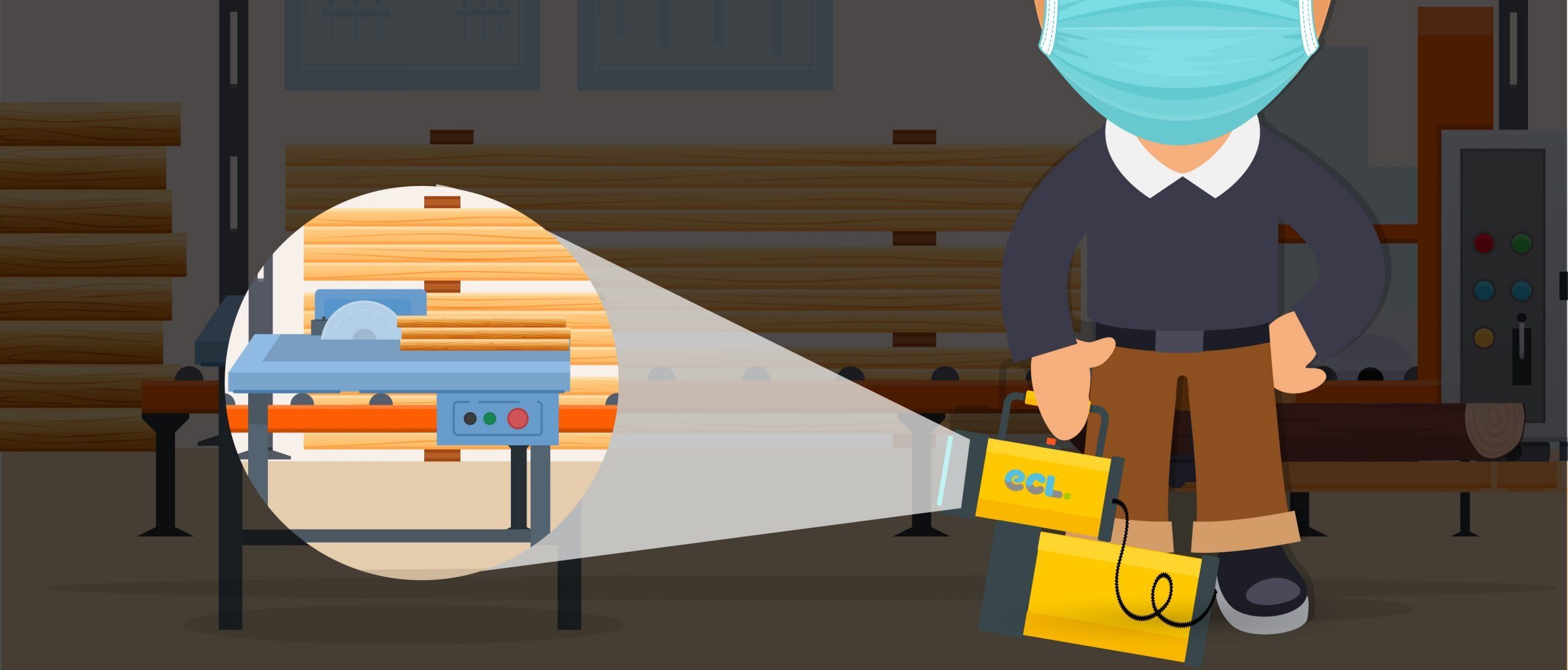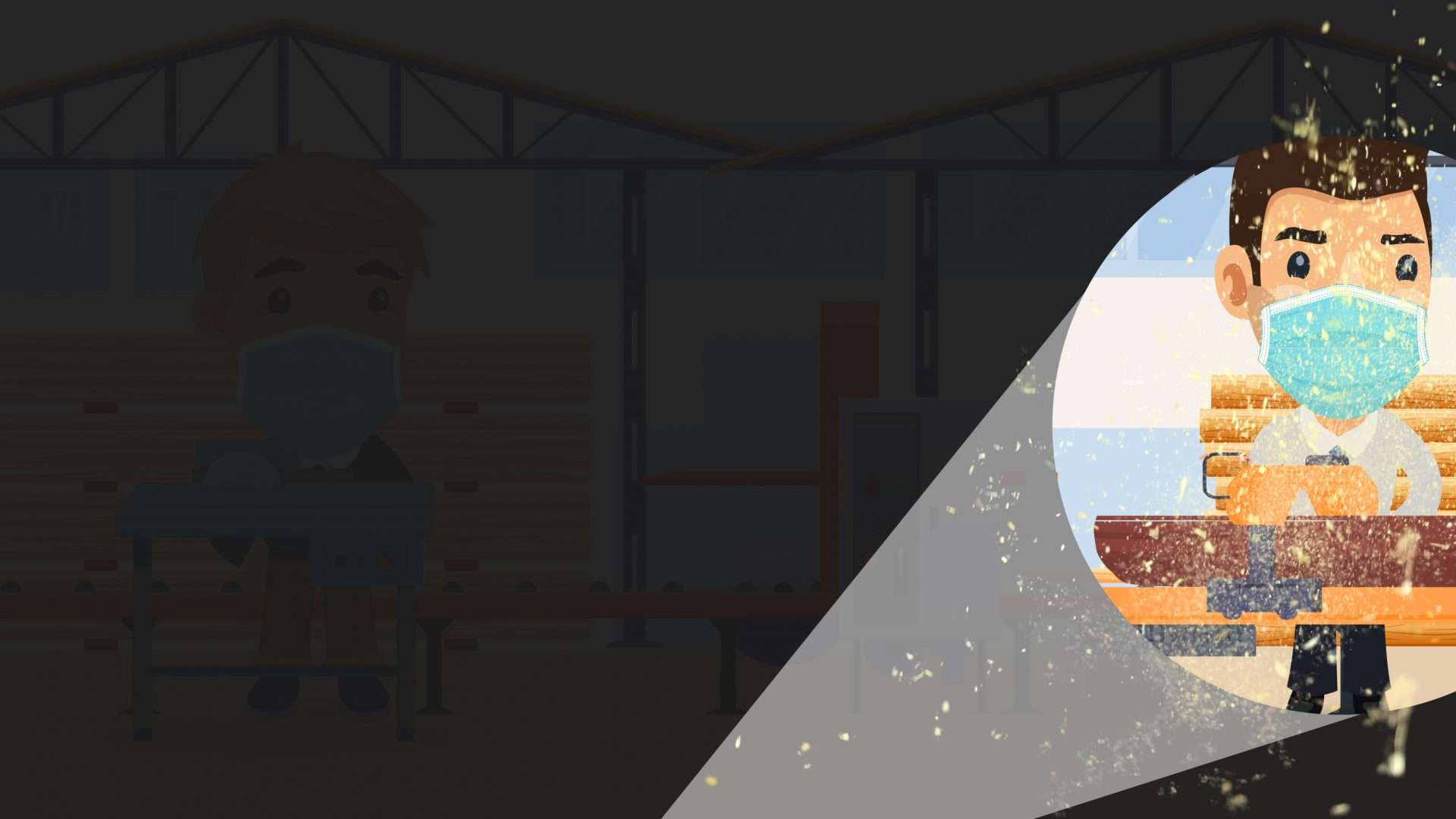Dust Lamp Surveys are an important aspect of an Occupational Hygienists work in identifying potential hazards and mitigating the dangers of dust in the workplace.
All dusts are assigned into 3 different sizes: inhalable, thoracic and respirable.
- Inhalable particulate is up to 100 microns in size, can enter the body through the nose or mouth and can impact the respiratory tract.
- Respirable dust is smaller than 10 microns, can penetrate into the deeper lung (alveola) and cannot be seen in normal light conditions.
- Thoracic fraction of dusts will penetrate beyond the larynx.
As stated in the Control of Substances Hazardous to Health (COSHH) Regulations 2002 employers must identify hazards and implement measures to prevent or adequately control exposure to dust.
One of the most common hazards that can affect workers is the presence of dust, which can lead to respiratory problems and various other serious health issues.
Thousands of workers fall ill from exposure to dusts every year developing COPD (Chronic Obstructive Pulmonary Disease), Occupational asthma, other lung diseases and different types of cancer all of which can take many years to develop.

What Is A Dust Lamp Survey?
A Dust Lamp Survey is a method of identifying dust hazards in the workplace as detailed in MDHS 82/2.
This survey involves the use of a specialised lamp that emits a powerful light beam, which can illuminate dust particles that are not visible to the naked eye.
By using a Dust Lamp, we can identify areas where dust is accumulating and needs to be controlled, which can help with preventing health hazards, mitigate the dangers of dust and reduce the risk of potential fires and explosions.
If your COSHH Risk Assessment has highlighted a possible exposure to particulates, the dust lamp is a simple qualitative method to establish the presence and possible risk of airborne particulate.
The method can also be used to determine whether control measures such as local exhaust ventilation (LEV) is capturing contaminants effectively or identify the existence of any leaks in processes or control systems.
Due to the different fractions of dusts, not all dust generated from processes is visible; a Tyndall Beam Dust Survey can however be used to make airborne particulates which are smaller than 10µm aerodynamic diameter visible. Particulates of this size can move with the air they are suspended in and also settle out of the air at a slower rate and can remain airborne for a longer period of time.
The light beam will allow the observer to visualise the presence and see movement of the dust cloud and can be used to identify areas which have likelihood of exposure.
Once high risk areas are identified, further sampling can be carried out using active sampling methods for specific dusts to obtain quantifiable results to compare to relevant Workplace Exposure Limits (WELs).
Alternatively, when an Air Sampling Campaign has been carried out and indicated potentially significant exposure when the results are compared to WELs, the dust lamp can be used to gain an understanding of the source of exposure.
Who Requires Dust Lamp Surveys?
Any workplace where dust is present can benefit from a Dust Lamp Survey, as dust can come in many forms and through a wide variety of processes and industries such as:
- Factories
- Construction Sites
- Laboratories
- Wood Working Processes
- Demolition Sites
- Baking Industry Processes For Flour Dusts
Additionally, any workplace that is subject to health and safety regulations must ensure that dust levels are kept within safe limits to reduce the dangers of dust, and a Dust Lamp Survey can help to achieve this.
What Are The Benefits of a Dust Lamp Survey?
There are many benefits to conducting Dust Lamp Surveys in the workplace.
- It can help to identify areas where dust is accumulating, which can help to prevent respiratory problems and other health issues.
- It can help to prevent fires and explosions, which can be caused by the accumulation of dust in certain areas.
- It can help businesses to comply with health and safety regulations, which can prevent costly fines and legal action.
A dust lamp can be used to identify areas of a system in which particulate is escaping. For example, if particulate is still present on surfaces, for example before Wood Dust Monitoring to locate dust around a wood processing machine which is already fitted with LEV, or prior to Silica Dust Monitoring to find fine Respirable Crystalline Silica created by the cutting, grinding or drilling of materials such as concrete, granite, brick and mortar, among others.
The dust lamp can also be used to ascertain the likelihood of personal exposure to water mixed metal working fluid (WMMWF) from CNC machines. As there is no exposure limit for WMMWF or oil mist and exposure must be reduced as low as is reasonably practicable (ALARP); the dust lamp can be used effectively for visualizing potential exposure while operating the machinery.
The use of the dust lamp can help to identify whether the control measures in place are effective at preventing mists escaping into the workplace atmosphere. To comply with ALARP, CNC machines should be fully enclosed, LEV installed and time delays set on doors with good fluid management.
The dust lamp can also be used in conjunction with Smoke Clearance Time Testing to ascertain the time needed for mists/particulates to be cleared from an enclosure by the LEV. The smoke clearance time testing is useful when examining whether a time delay on CNC machines or spray booths are correct / sufficient.

How Can ECL help You Mitigate The Dangers of Dust?
Dust Lamp Surveys are an essential part of workplace health and safety.
Whether a company decides to undertake a dust lamp survey alongside an active Workplace Air Monitoring Campaign can sometimes come down to financial constraints, however the company has a legal obligation to identify all potential hazards and ensure workers are protected from them using control measures.
By identifying potential dust hazards, businesses can prevent health issues, fires and explosion risks, whilst complying with health and safety regulations.
Liaising with qualified professional occupational hygienists can help businesses generate appropriate strategies to assess exposure risks within the workplace.
ECL have over 20 years experience with BOHS members at Chartered, Licentiate and Associate levels of the Faculty Occupational Hygiene. We offer a range of Occupational Hygiene Services, including Dust Lamp Surveys, LEV Testing, COSHH Risk Assessments and Occupational Exposure Monitoring.
Our team of highly trained and experienced Occupational Hygienists can help to identify potential dust hazards and provide advice on how to reduce the dangers of dust in the workplace.
By using state-of-the-art equipment to conduct our dust surveys, including specialised dust lamps that can detect even the smallest particles.
Our services are tailored to the needs of each individual business, and we pride ourselves on providing accurate and reliable results.
If you require a Dust Lamp Survey or any of our other Occupational Hygiene services, please contact ECL via our Online Contact Form, by emailing info@ecl.world or calling us by phone on 01443 841 760 to find out how we can help.

